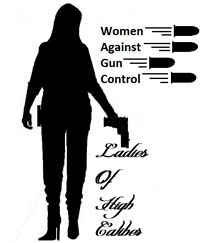Editorial: The reality about gun deaths differs from the impression
Editorial: The reality about gun deaths differs from the impression
Date: Jul 12, 2005 8:15 AM
PUBLICATION: Vancouver Sun
DATE: 2005.07.12
EDITION: Final
SECTION: Editorial
PAGE: A10
SOURCE: Vancouver Sun
——————————————————————————–
The reality about gun deaths differs from the impression
——————————————————————————–
Rarely a day goes by that we don’t hear of someone, somewhere in Canada, suffering
a grisly death as a result of a firearm. Most recently, the high-profile gun murders
of a mother and her two children in London, Ont., and of four RCMP officers in Mayerthorpe,
Alta., can easily give the impression that gun violence is out of control.
But impressions are not reality, and the reality of the situation is quite different.
While Canada has always had relatively low levels of gun violence, a recent report
from Statistics Canada shows that gun deaths have decreased dramatically in the
last quarter of a century.
Titled Deaths Involving Firearms, the report confirms that between 1979 and 2002,
firearms-related death rates fell by more than half in men (from 10.6 to 4.9 per
100,000 people) and by three-quarters in women (from 1.2 to 0.3 per 100,000). Further,
the number of homicides involving firearms decreased from 71 in 1979 to just 31
in 2002.
The drop could be partly a result of the aging population, although there’s reason
to believe that young people are now also less likely to become the victims of gun
violence: In 1979, the firearms death rate was highest for those between 15 and
24, but by 2002, the death rates for young people were indistinguishable from those
in older age groups.
While it’s well known that crime rates tend to be higher in the West, British Columbia’s
firearms-related death rate between 2000 and 2002 was slightly lower than the Canadian
average: B.C. registered 2.6 gun deaths per 100,000 population, compared to 2.7
per 100,000 in Canada.
All of this is good news for British Columbians and Canadians, and should help to
counter the impression that gun violence is becoming more common.
But there is some sad news as well: Eighty per cent of gun deaths aren’t homicides,
but suicides. And while gun-related suicides have dropped along with gun-related
homicides, the suicide rate has remained relatively constant, as people increasingly
choose other means of ending their lives.
Perhaps the saddest news is that northern Canada is home to far more firearms-related
deaths than anywhere else in Canada. In contrast to Canada’s rate of 2.7 deaths
per 100,000 people, Yukon and Northwest Territories experience about 10 deaths per
100,000, and Nunavut saw 17.8 deaths per 100,000 in 2000-2002, all of them from
suicides.
Still, though, the fact that fewer people are using guns to commit suicide (and
that there are now fewer accidental gun deaths) suggests that some legislation –
such as 1977′s law requiring people to have a Firearms Acquisitions Certificate
– might have helped to keep guns out of the hands of vulnerable people.
It’s difficult to tell if subsequent legislation such as the gun registry has had
a similar effect, since the rate of gun deaths was already in decline when the registry
began. Further, the gun registry is aimed at rifles and shotguns (mandatory registration
for handguns has existed since 1934), which account for only about one- quarter
of all firearms deaths.
So the general trend of declining gun deaths is unquestionably positive, and it’s
something everyone should keep in mind when confronted with another high-profile
gun-related tragedy.
—————————————————————
BUT DID OUR GUN LAWS ACTUALLY SAVE ANY LIVES?
By Garry Breitkreuz, MP, Conservative Firearms Critic – June 30, 2005
http://www.garrybreitkreuz.com/publicate/Columns/2005_june30.htm
NOS LOIS SUR LES ARMES ? FEU
ONT-ELLES VRAIMENT SAUV? DES VIES?
Par Garry Breitkreuz, d?put?, porte-parole conservateur en mati?re d’armes ? feu,
30 juin 2005
http://www.garrybreitkreuz.com/publicate/Columns/2005_june30_fr.htm



